Mullard 3-3 is a quite popular 3W electron tube amplifier introduced by Mullard Ltd in 1955. A schematic and the design details of this amplifier are available in the book “Circuits for Audio Amplifiers” by Mullard Limited 1959 and in the book “Hi-Fi Amplifier Circuits” by E. Rodenhuis 1960 Philips Technical Library, and also in the National Valve Museum website article. The amplifier uses three vacuum tubes: an EF86, an EL84 and an EZ80.
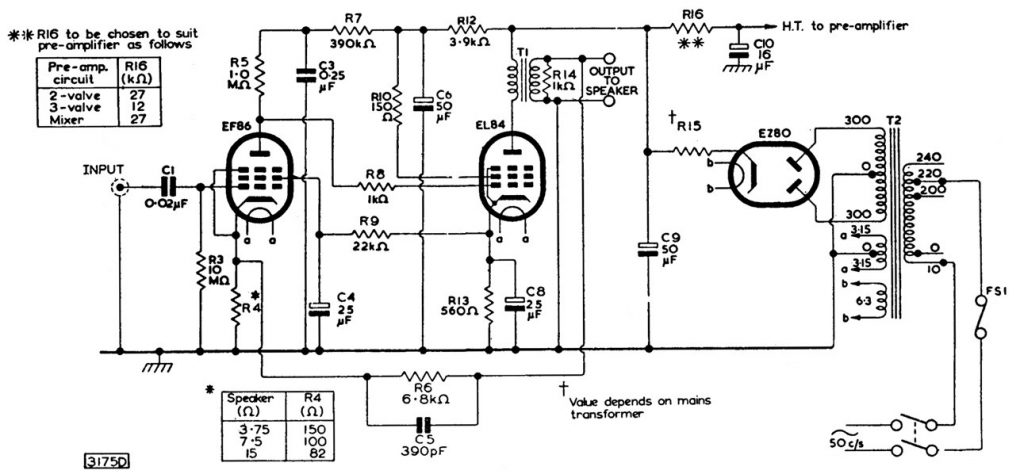
The power output is ample for home use with a loud speaker of ordinary sensitivity and is generally agreed that a higher output is not normally required. The model 1955 (Mullard 3-3) is ideally suited to applications in the average home.
An unusual DC-coupled stages tube amplifier
Only two stages are used and the amplifying stage EF86 is DC-coupled to the single valve output stage EL84. The control grid of EL84 is at the same potential as the anode of EF86 via R8, so the cathode potential of EL84 is about 30 volts above ground. This is a suitable value for the screen grid potential of EF86 via R9, but the most important feature of this strange and clever DC-coupling is a DC negative feedback (NFB) system from cathode of EL84 to screen grid of EF86. It works together with the AC negative feedback from the output of the audio transformer to the cathode of EF86. These improvements enhance the flatness of the frequency response and also reduce harmonic and waveform distortion, as well hum and noise.
The EF86 in the voltage-amplifying stage is used under conditions approaching those of starvation operation, 20 V anode and 0,21 mA. The voltages and currents are very much lower than normally. Instead of using a cathode self-bias the tube bias is obtained by means of a hight value grid leak resistor (10 MΩ). With a high value of anode load resistance (1 MΩ) and reduced values of anode and screen-grid voltages, the gain of the stage is raised two or three times above that obtained under normal operating conditions.
British Broadcasting Corporation
This Mullard 3-3 circuit, with some minor changes, was used by the UK BBC for their Loudspeaker Amplifier AM8/2 and AM8/2A on amplifiers with serial numbers 101 to 185. Loudspeaker Amplifier AM8/2 forms part of the General-Purpose Loudspeaker LS/1 described in Instruction S.8, and is mounted in the amplifier compartment at the bottom of the loudspeaker cabinet.
Its performance and certain other features are specified by the BBC but otherwise its design and construction are left to the manufacturer. We can see the document in the Recollections of BBC engineering from 1922 to 1997 at BBCeng.info.
The project
In this project, I decided to construct a quality tube amplifier, while being as electrically similar as possible to the original Mullard 3-3 amplifier, in stereo version. Thanks to their small size the amplifier only requires a little space: 25.4 x 19.2 x 13.3 cm (10 x 7.56 x 5.24 in).
This goal has been achieved via:
- The use of high-quality components from premium brands: resistors, capacitors, terminals, sockets, fuseholders, switches, connectors and transformers. I have avoided cheap counterparts.
- Drilling and milling a beautiful strong black steel chassis.
- Employing electronic parts as similar as possible to those used in the year 1955, including carbon composite resistors and a can type multi-sectioned electrolytic filter capacitor.
- Avoiding the use of semiconductors, LED lights or printed circuits. The wiring is meticulously hand made.
To make the assembly easier, I simplified the schematic by removing the tone controls. The tone controls in the original circuit are not complete tone controls that allow for increasing or decreasing both the treble and bass levels. The RV2 treble control is actually a high-block filter that only allows for more or less attenuation of the high part of the audio spectrum, while the RV11 bass control reduces the negative feedback of the amplifier for the low notes, resulting in an increase in low frequencies (boosting low frequencies).
For building this stereo version I needed to design a new power supply because the amplifier doubles the power requirements of the original. I also had to replace the EZ80 rectifier tube with an EZ81 tube.
Here you are the final schematic:
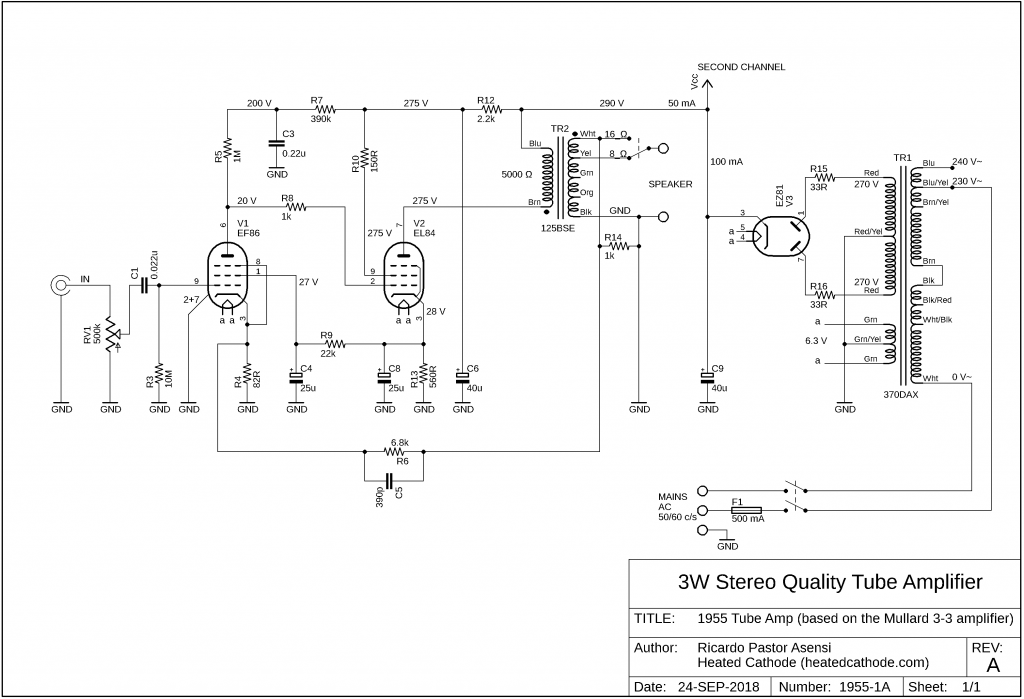
Download 1955-1A schematic in PDF
This parts list provides the manufacturer and part number for all of the electronic components that were used to build this device. Additionally, you can find the data sheets for each of these components.
AC mains voltage varies by country, but you can wire the primary windings of the supply transformer according to your voltage for 100, 110, 120, 200, 220, 230, 240 V, as you can see in the universal primary wiring diagram below. This transformer is designed to operate with utility frequencies (power line frequency) of 50 or 60 Hz.
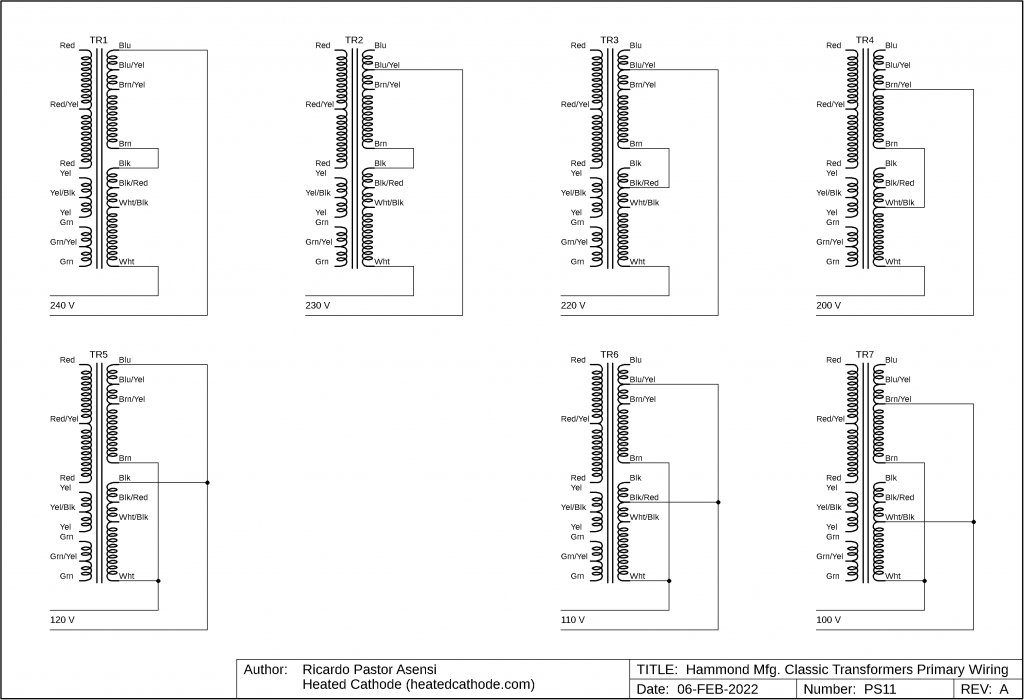
Download main transformers wiring schematic in PDF
I have tested the amplifier under the 230V 50Hz mains power in Spain, with a pair of Wharfedale DIAMOND 10.0 speakers and it sounded great. You can see its performance on measurements page. The sensitivity of the amplifier is 100 mV rms for 3 W rms output per channel.
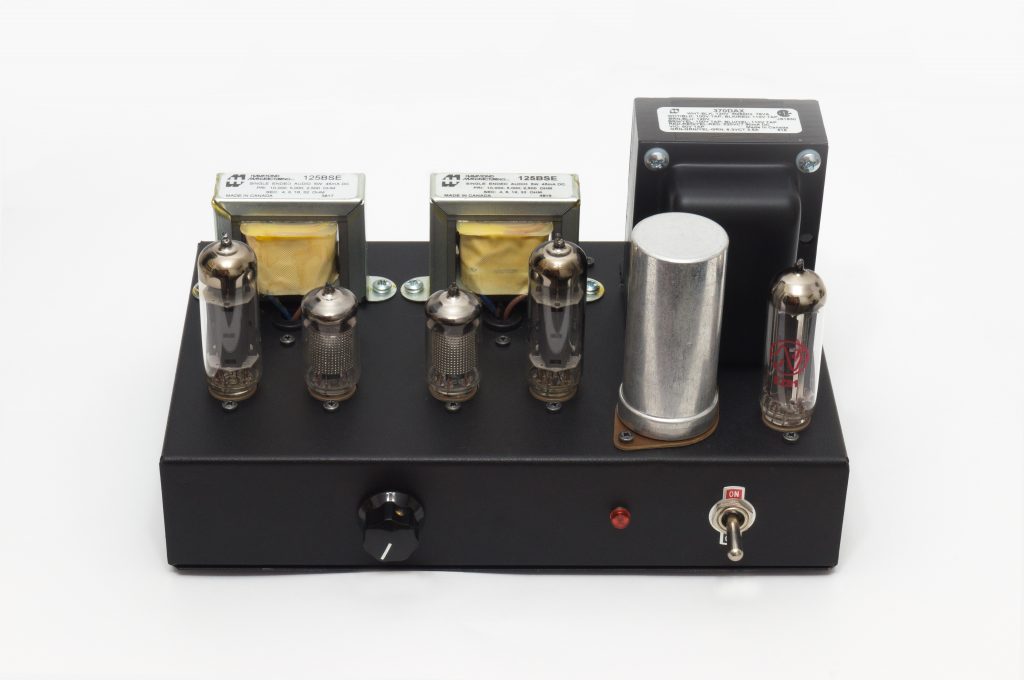
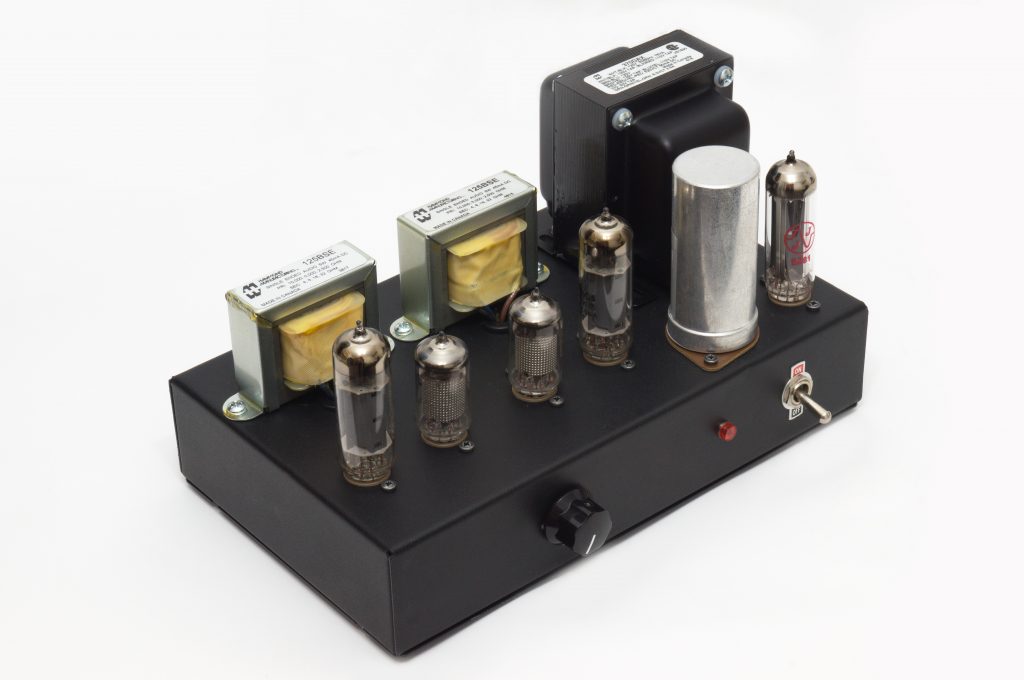
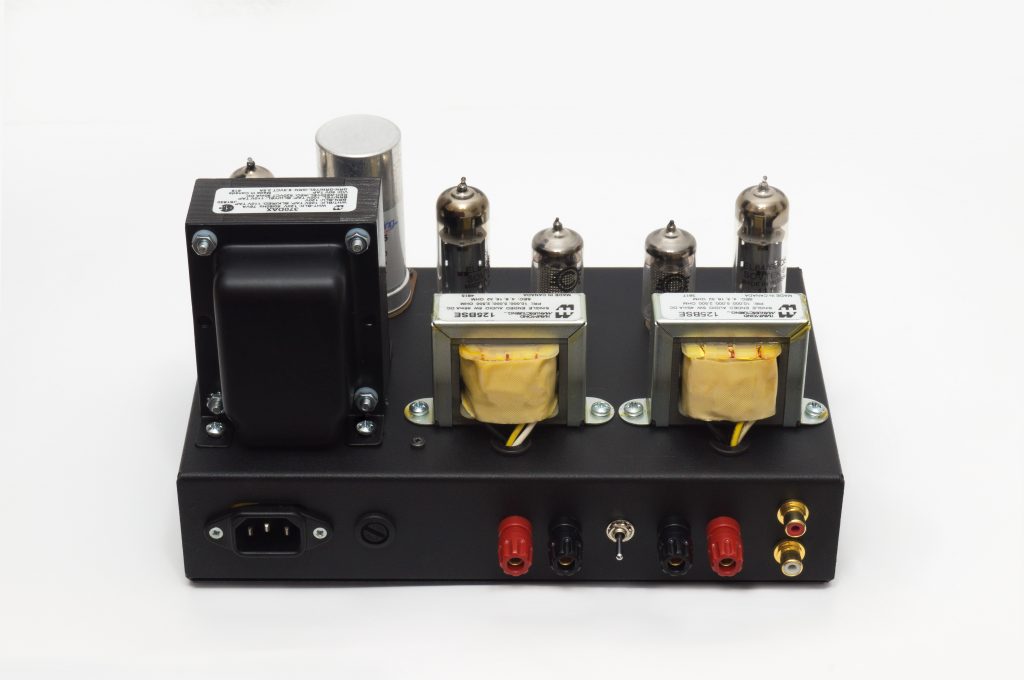
Other versions of the 1955 model
In the preceding text I have explained the first version of this audio amplifier that I built during the summer of 2018 and later personally tested while using it in my home for several years.
Later on, I built the following variations of the same amplifier
- The Gen2 version of the 1955 model amplifier includes a supply voltage selector switch for 100, 120, 230, 240 V ac 50/60 Hz, a speaker impedance selector switch for 4, 8, 16 Ohm and also a 6.3 V incandescent-indicator light.
- The 1955-3 version of the 1955 model with the Mullard 3-3 original tone controls.